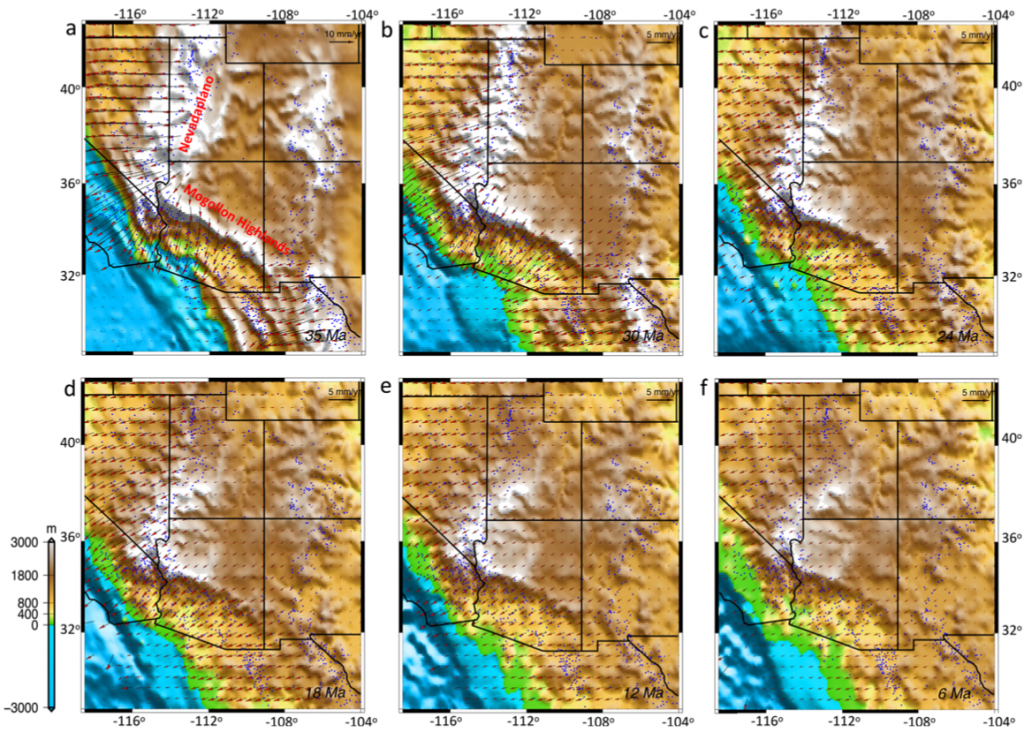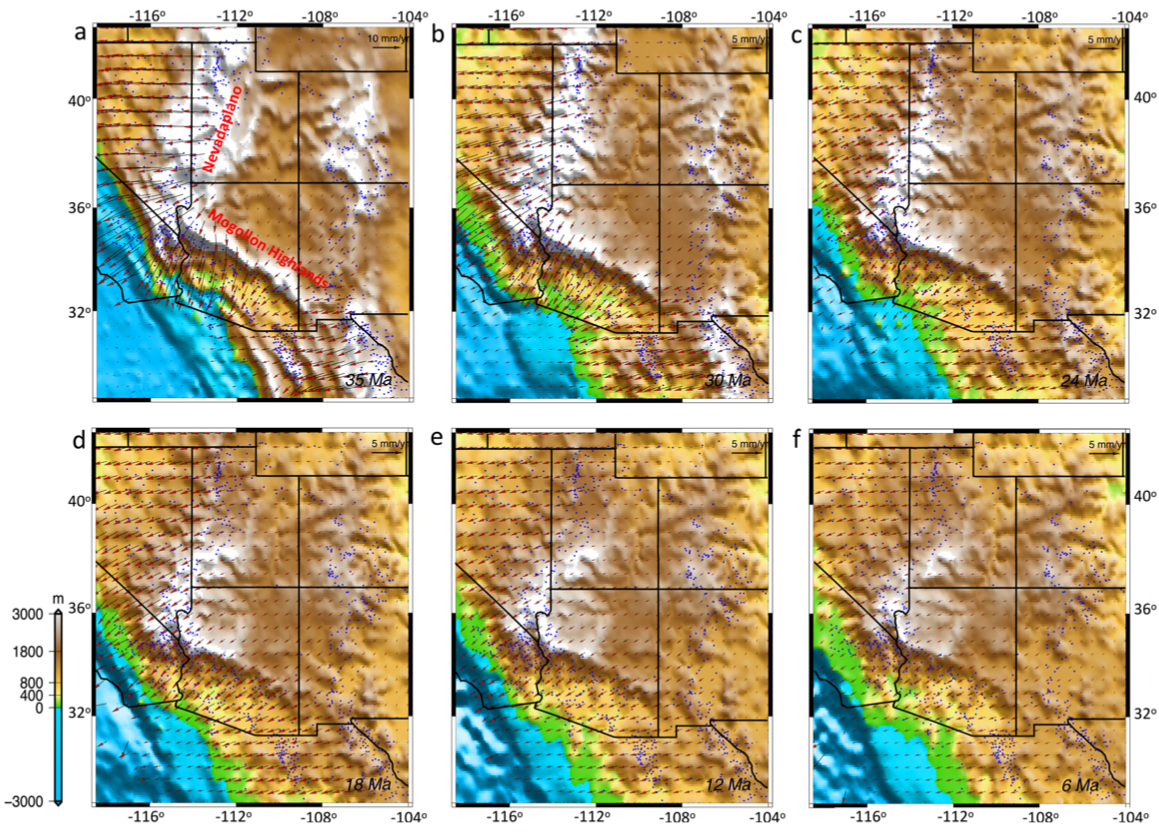
The Cenozoic landscape evolution in southwestern North America is ascribed to crustal isostasy, dynamic topography, or lithosphere tectonics, but their relative contributions remain controversial. Here we reconstruct landscape history since the late Eocene by investigating the interplay between mantle convection, lithosphere dynamics, climate, and surface pro- cesses using fully coupled four-dimensional numerical models. Our quantified depth-dependent strain rate and stress history within the lithosphere, under the influence of gravitational collapse and sub-lithospheric mantle flow, show that high gravitational potential energy of a mountain chain relative to a lower Colorado Plateau can explain extension directions and stress magnitudes in the belt of metamorphic core complexes during topo- graphic collapse. Profound lithospheric weakening through heating and partial melting, fol- lowing slab rollback, promoted this extensional collapse. Landscape evolution guided northeast drainage onto the Colorado Plateau during the late Eocene-late Oligocene, south-southwest drainage reversal during the late Oligocene-middle Miocene, and southwest drainage following the late Miocene.
![]()

